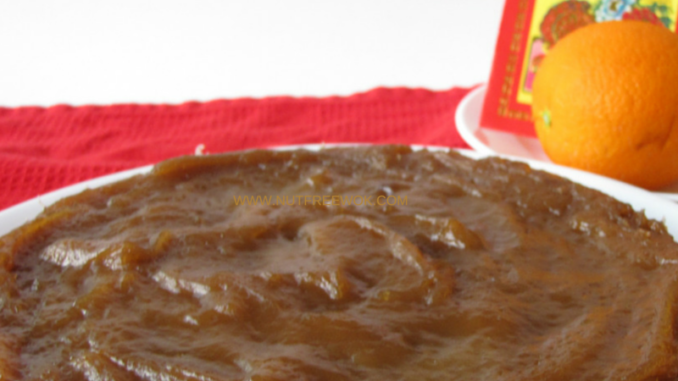
Chinese New Year Cake “Nian Gao” is a very traditional steamed rice cake dessert with special meaning in the Chinese culture. This dessert also happens to be free of the top 9 food allergens and very allergy friendly.
This post was updated on 11/21/2023 with minor updates.
Disclaimer: Please check that all ingredients are suitable for your allergies and be sure to ask your medical care team regarding any allergy related questions (I do not share medical advice). As an Amazon Associate I earn from qualifying purchases.
Chinese New Year Traditions
Right after January 1st of each year, my parents spent almost every weekend preparing for Chinese New Year, now also referred to as Lunar New Year to include other Asian cultures that celebrate. My parents bought extra food, cleaned the house, and withdrew newly minted crisp dollar bills from the bank to fill red envelopes with “lucky money.” My cumulative memories of Chinese New Year include vases of beautiful pink quince blossoms on otherwise bare branches, tangerines with little red envelopes next to them, lots of candy and sweetened dried fruits, festive fire crackers and lively dragon dances.
One of the best parts of Chinese New Year for a child is to greet our elders with “Gung Hay Fat Choy” which means “May You Be Happy and Prosperous” in Cantonese and then receive red envelopes containing “lucky money.” I definitely felt lucky to grow up with a huge extended family with many family friends and definitely rich with tradition and fond memories.
Why Do We Eat Nian Gao During the Lunar New Year?
My mom always made a New Year cake, also known as nian gao. Even though the words nian gao mean “year cake,” the words sound like “year higher” and symbolize prosperity or promotion or children growing taller.
Since I first started blogging, I have shared other recipes that are appropriate for Lunar New Year celebrations.
- Chinese New Year Cake “Nian Gao” Recipe – a steamed glutinous rice cake dessert
- Rice Ovalettes with Pork and Vegetables Stir Fry Recipe (Chao Nian Gao) – a savory stir fry
- Chinese Style Steamed Fish & Chinese New Year – fresh steamed whole fish
- Delicious Red Bean Black Glutinous Rice Soup Recipe – this dessert soup is considered lucky
- Pan-Fried Pork and Shrimp Dumplings (Potstickers) – great appetizer
- Chinese Potstickers with Napa Cabbage Carrot Soup & Crazy Cuizine Review – use frozen potstickers to make soup
- Make Chicken Potstickers From Scratch Recipe – chicken potstickers
- Chinese Potstickers Recipe: Pork & Napa Cabbage – shrimp free potstickers
- Dim Sum: Turnip Cake – a savory steamed rice cake that is pan fried until crispy
- “Bok Cheet Gai” Slow Cooker Chinese White Cut Chicken – poach chicken in a slow cooker
- Easy & Low-Fat Chinese Salt and Pepper Garlic Shrimp Recipe – shrimp is an auspicious ingredient
- Happiness is a Shrimp Stir Fry with Spring Vegetables Recipe – a shrimp stir-fry
- Asian Chicken Lettuce Wraps are Easy to Make, Fun to Eat – lettuce represents abundance
- Stir Fried Iceberg Lettuce with Oyster Sauce – a simple stir-fry side dish
- Wagyu Sausage Lettuce Wrap – lettuce is symbolizes prosperity
- Make Beautiful Lettuce Cups for Lettuce Wraps
- Nut Free Chinese New Year Vegetable Stew “Jai” Recipe – a Cantonese vegetable stew with many auspicious ingredients
How to Make Nian Gao
My mom stirred sweet rice flour into a pot of boiling hot brown sugar simple syrup, plopped the gooey mass into a stainless steel bowl lined with bamboo leaves, and steamed it for hours until the windows fogged up with condensation.
She made it a day or two before Chinese New Year but we couldn’t eat it until then, which was just as well because the nian gao was way too sticky to cut, serve, touch or eat on the first day. Each day the cake became a little less sticky and a little more firm, until it was too dry and too hard, at which point my mom would either steam the cake again, pan fry slices in oil, or dip slices in egg and pan fry them like french toast.
Because you will need to steam this dessert for 90 minutes, it’s important to check that your pot is wide enough to hold the cake pan with some clearance for you to lower the pan into the pot without touching the sides of your pot. And because the steam time is so long, you also need to have enough water to steam for 90 minutes, a tall steaming rack, and enough clearance to put a lid on the pot. See my post about Steamy Cooking Tips: How to Steam Chinese Recipes.
Allergy Friendly Steamed Rice Cake
I am excited to share this particular recipe because nian gao is vegan, gluten-free, and free of the top 9 allergens, whoo-hoo!
And I was thrilled to find out that my mom’s favorite sweet rice flour by Koda Farms
A traditional recipe uses Chinese brown sugar bricks called pian tang but brown sugar is an acceptable substitute that is readily available. My family loves this recipe so you can count on it to be delicious.
Allergy aware warning:
Chinese new year cakes might have peanut oil, almond extract, red bean paste, stewed pork belly, lotus seeds, egg yolk, milk, coconut, sesame, etc.. It’s best not to assume that all nian gao is vegan or allergen free and ask before consuming store-bought or other homemade versions.
Enjoy the Chinese New Year cake recipe and “Gung Hay Fat Choy!” May you and your loved ones be blessed with good health, peace, and overflowing joy.
This recipe as written is vegan, gluten free, and free of the top 8 allergens.
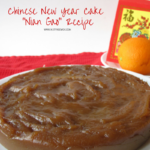

Chinese New Year Cake “Nian Gao” Recipe
Chinese New Year Cake "Nian Gao" is a very traditional steamed rice cake dessert with special meaning in the Chinese culture. This dessert also happens to be free of the top 9 food allergens and very allergy friendly.
Ingredients
- 1 1/2 cup dark brown sugar
- 1 1/2 cup water divided
- 1 box 1 pound Koda Farms sweet rice flour
- 2 tablespoons canola oil or other mild flavored vegetable oil plus 1/2 teaspoon to oil a pie plate
- 1 teaspoon vanilla extract
Instructions
-
Oil a pie plate or round cake pan with 1/2 teaspoon of oil.
-
Be sure to check that your dish will fit inside the pot with the lid on. Add 1 1/2 inch of water to a large pot with a tight fitting lid and a steamer rack and bring water to boil.
-
Measure 3/4 cup water in a glass measuring cup, add brown sugar, and microwave for 1 minute until the sugar is dissolved.
-
Pour sweet rice flour into a large bowl, add the brown sugar water, 3/4 cup of water, oil and vanilla extract.
-
Stir to combine until the rice mixture is smooth and free of lumps.
-
Transfer the rice mixture into the prepared pie plate and smooth out the top.
-
Set the cake inside the pot and steam for 1 1/2 hours.
-
Check the water level of the pot periodically (avoid letting the condensation from the lid drip on the cake when lifting the lid) and replenish with hot water as necessary.
-
Allow the cake to cool completely, cover with plastic wrap, and the cake will be ready to serve the next day.
Recipe Notes
For this recipe, it’s important to be sure that your pot will be wide enough and tall enough to fit your cake pan or pie dish and have enough water in it to steam for 1 1/2 hours. Refer to my post about steaming tips.
Thanks for reading, please help Nut Free Wok!
If you like this post or recipe, please be sure to give a 5 star rating, leave a comment, and share this post! Your support means a lot to me.
Subscribe to Nut Free Wok’s email subscription (be sure to respond to the confirmation email). You will be notified by email next time I publish another post or recipe and I won’t send you spam or share your email address with anyone.
Disclosure/Disclaimer:
I may mention the names of stores and/or brand names of products that I use because readers ask and I share products and sources which I use and think may be helpful to readers, all opinions are my own. Please note that manufacturing practices and ingredients can change at anytime without notice and readers are always responsible for assuring allergen safety before buying or consuming foods. NutFreeWok.com is a participant in the Amazon Services LLC Associates Program, an affiliate advertising program designed to provide a means for sites to earn advertising fees by advertising and linking to Amazon.com. Thank you for reading!

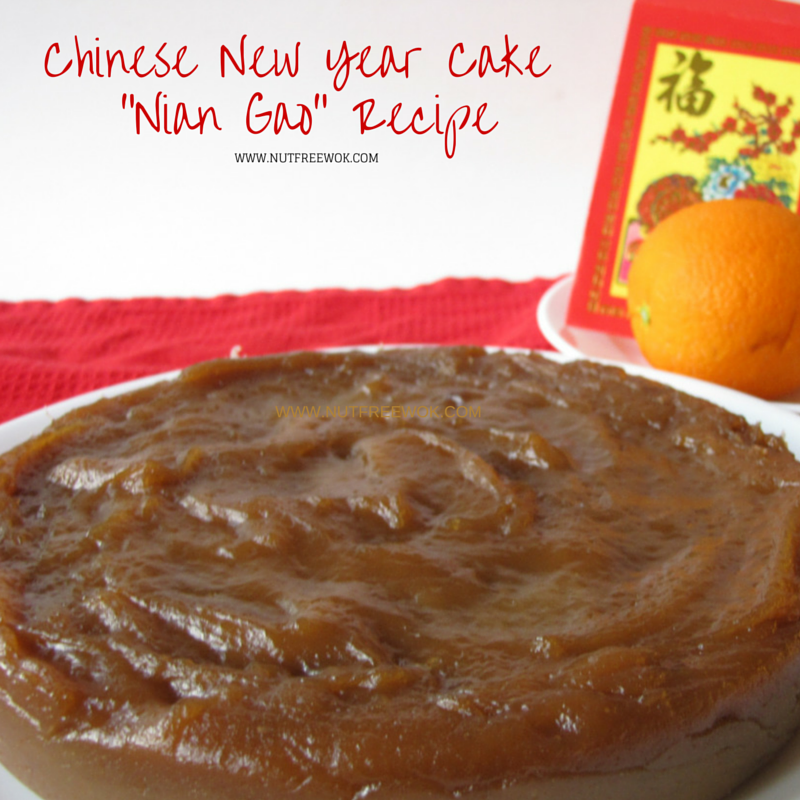
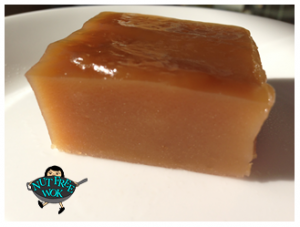

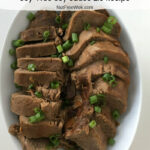
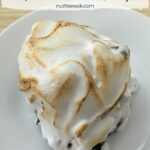
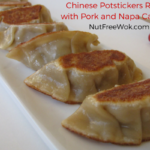
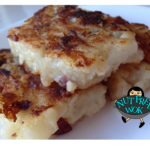


I love nian gao – my mom used to make it when I was growing up too. I haven’t made it in years, but hopefully I’ll get to it this year.
We’re both so lucky that our moms made Nian Gao for us when we were little. I think I’ll make one for my mom this year. 😉 Enjoy and happy new year, Jeanette!
When I saw this first, it reminded me of a Indian sweet jelly like cake called bebinca. The texture is similar but the ingredients are different (and the procedure is different). I am quite curious and wonder how your new years cake tastes. Thanks for sharing! 🙂
Bebinca sounds like something I would like, thanks for mentioning it! “Nian Gao” is soft and chewy, like taffy the first day, like a gummy candy the second day, and it gradually hardens by the third day. When it’s too hard, I like to either re-steam it or pan fry it with an egg (like french toast) or plain. Enjoy!
Sharon, this recipe is SO cool! I adore the flavor of brown sugar and can only imagine how amazing this must taste. Guess I should stop day-dreaming and get to the kitchen 🙂
Alisa, it’s a fun recipe to make and eat and has a legend to go with it as well. The take home message is don’t try to eat it on the first day because it’ll be super sticky! Enjoy. 🙂
Sharon, I just made these for the first time (and actually halved the recipe). Who knew this was so easy? I made it just so we can pan fry with egg. A taste from my childhood that I’m sharing with my 12-year old (who loves it too). Thank you so much for sharing!
Helena, I’m so glad you loved the recipe. I fried nian gao with egg this weekend too and forgot to take a picture for a recipe on how to make it. It’s really the best part of Chinese New Year, LOL! 😉 Thanks for your kind message, you made my day!
Sharon, I can’t wait to try your recipe! My aunt pan-fried slices of Nian Gao at yesterday’s Chinese New Year dinner but I only got a few. I need more! And I can’t believe we only eat this once a year when it’s so delicious.
I’m with you, I love pan-fried nian gao!
I just found your website and am very excited to try some of your recipes. I’m originally from Hawaii and I fee up eating these dishes!
Have you ever made the gao in an Instant Pot? Wondering how long I would steam It?
Hi Sandee, I’m so glad you found my site. That’s such a great idea to make the nian gao in the IP! I will try it and let you know. I have to find a large enough container that will also fit into the IP.
How long will this last after it is put in pie pan and covered? Maybe a week or ????
Thank You, Martha
It might get moldy after 3-4 days but we usually finish almost all of it before it spoils. 😉
The recipe is simple and easy. I made it for myChinese daughter in law when she came to India. Thank you
Dr.swamy
That’s so thoughtful and kind of you! I’m glad you enjoyed the recipe.
I followed this recipe to the dot and my dough ended up too dry and not the texture you would see from other nian gao recipe/videos.. In what world does 1.5 cups of water and 1 pound of flour match up to a liquidy consistency?
Hi DAG, thanks for the feedback. I made the recipe after reading your comment and it came out as expected. When I add 1.5 cups of sugar to 3/4 cups of water to heat up, the volume actually goes up to nearly 2 cups and then I later add the remaining 3/4 cups of water to the batter. I posted a video of how the batter should look on Twitter, I hope that helps you for future reference.
I followed your recipe and checked that the consistency was the same as your twt post and somehow I still messed it up. ? Mine came out okay on the bottom but dry/ cracked towards the middle & top after 1.5 hours of steaming.
Help!。:゚(;´∩`;)゚:。
Do you cover yours while steaming? And how high is your temp while steaming??? I don’t know what I’m doing wrong!?
I do cover the pot with a lid but I don’t cover the nian gao if that’s what you mean. I usually aim for medium temperature, just enough to have some extra steam come out but not too high so that the water runs out. I’ve made the recipe as is many times and haven’t experienced a dry or cracked nian gao…sorry I have no additional ideas.
Hey, can i use glutionous rice flour instead of the sweet rice flour?
Yes, they’re different names for the same product.